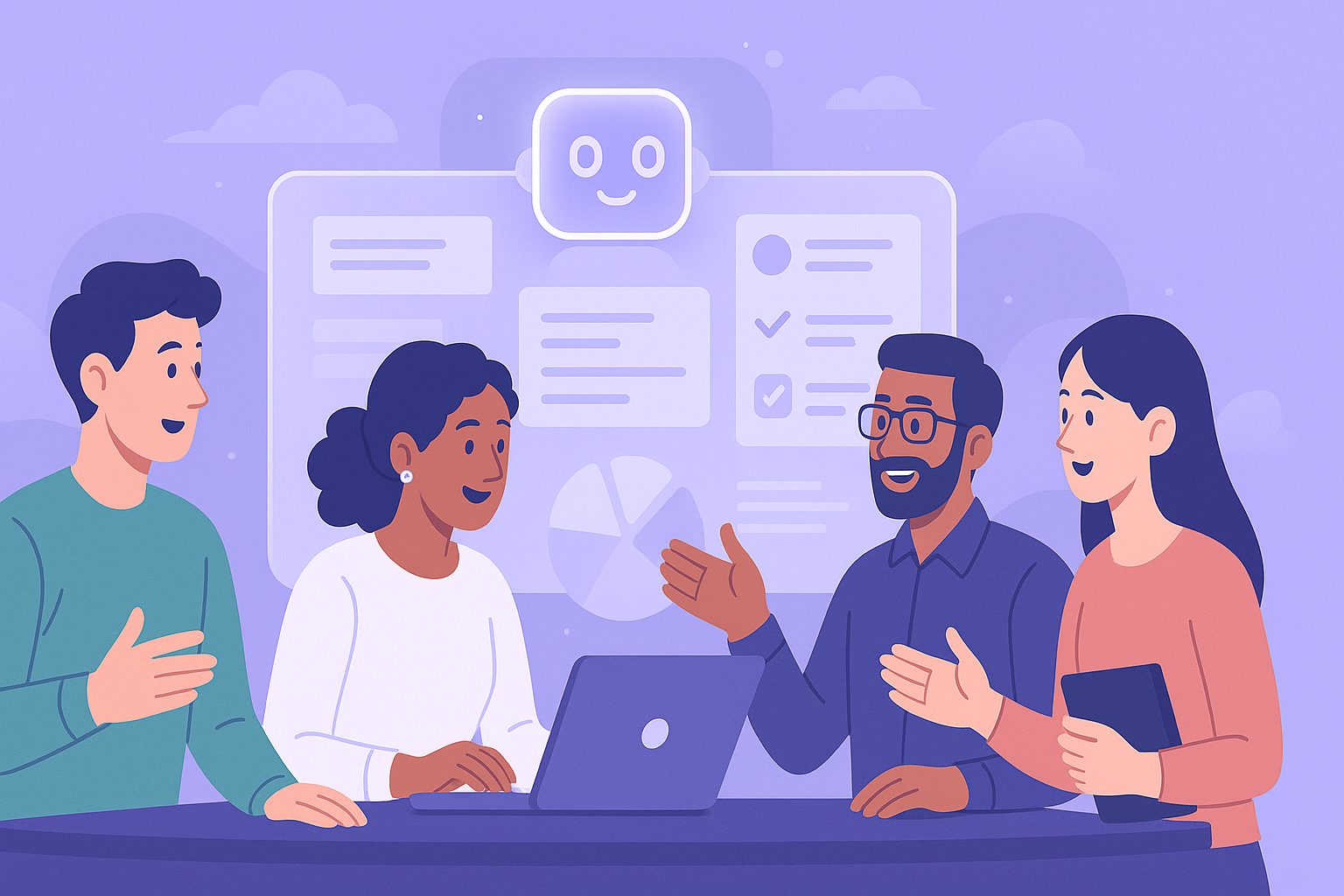Building Trust with AI: It’s Not Just About the Algorithm, It’s About the Team (Duh!)
Alright, folks, AI is crashing the party and muscling its way into our team workflows. From suggesting the perfect GIF (because, let’s be honest, GIFs are life) to automating those soul-crushing tasks, AI promises to make us all super-productive and creative. But here’s the million-dollar question: How do we make sure these AI-powered teams aren’t just efficient robots, but actually, you know, built on trust?
The AI Black Box: A One-Way Ticket to Distrust-ville
Let’s be real: sometimes, AI feels like a mysterious black box. Your team’s using a gazillion AI tools, each spitting out results with zero explanation. No shared prompts, no peeking behind the curtain at how the AI actually makes decisions. This lack of visibility is a trust-killer. It’s like working with a teammate who always delivers, but refuses to explain their methods. You end up with misalignment, skepticism, and that nagging feeling that you can’t actually trust the output. Not ideal.
Shining a Light: Transparency to the Rescue!
Trust in AI isn’t some fluffy buzzword; it’s the bedrock of effective collaboration. And the secret sauce? Transparency. We need to pull back the curtain and show everyone how the AI magic works. Sharing prompt designs, AI model settings, even decision logs transforms AI from a mysterious wizard into a collaborative partner. When everyone understands AI’s role, accountability skyrockets, and team confidence goes through the roof. It’s like turning on the lights in a dark room and realizing there’s no monster under the bed, just a slightly confused robot.
Atlas: Your AI Transparency Command Center
Imagine a world where all AI interactions are in one place, prompts and outputs are shared, and every team member has a crystal-clear view of the AI-driven process. That’s the beauty of Atlas. By bringing AI partners directly into project workflows, Atlas busts down silos and creates a unified approach to AI-driven work. It’s like going from a chaotic kitchen where everyone’s throwing ingredients around to a well-organized cooking show where everyone knows what’s going in the dish and why. Delicious!
Beyond the Platform: Cultivating a Culture of AI Trust (Because Tech Alone Isn’t Enough)
But transparency is more than just the platform; it’s a mindset, people! Here are some extra strategies to build trust and collaboration in AI-driven teams:
- Standardize AI Usage Guidelines: Create clear rules for using AI tools, including how to write prompts and validate outputs. Think of it as creating a shared language for talking to our robot overlords (in a friendly way, of course).
- Educate Teams on AI (Without Putting Them to Sleep): Demystify AI with some engaging training. Empower your team to think critically about AI outputs. Knowledge is power, especially when it comes to understanding these digital brains.
- Encourage Open Dialogue About AI (No Judgment Zone): Create a safe space for team members to chat about their AI experiences, the good, the bad, and the weird. Regular discussions build a culture of openness and collective learning.
- Audit AI Outputs (Because Robots Can Be Biased): Implement checks to make sure AI outputs align with your team’s values and goals. Ethical AI use is crucial for building trust.
Navigating the Transparency Tightrope (It’s a Balancing Act)
Of course, this journey to AI transparency has its bumps. Some might resist sharing details due to “secret sauce” concerns or fear of being judged. We need to balance transparency with simplicity to avoid overwhelming everyone with data. And, obviously, security is key to protect those sensitive AI-driven workflows.
But trust me, these challenges are worth tackling head-on. By embracing transparency and collaboration, we can unlock the full potential of AI and build stronger, more trusting teams. Because the future of work isn’t just about AI; it’s about how we learn to dance with AI.
